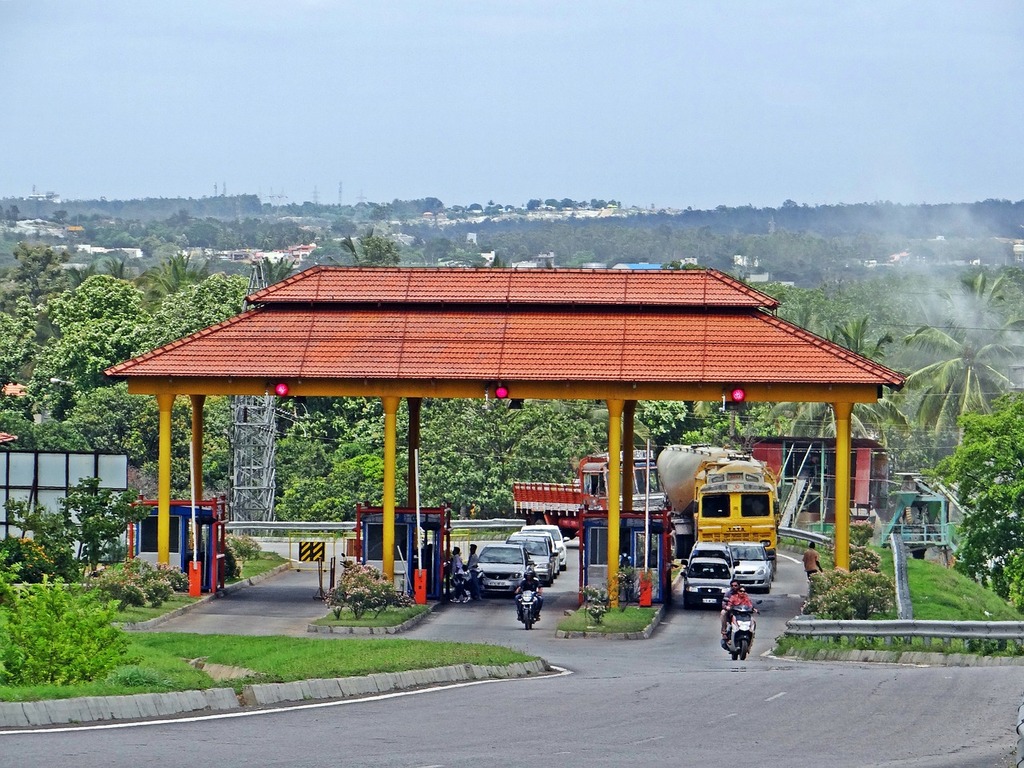Toll collection in India is constantly evolving. What began as manual cash payments at highway checkpoints has evolved into an increasingly digital ecosystem featuring FASTag (RFID), and now newer regulations are pushing UPI (Unified Payments Interface) options. This article traces that journey, compares FASTag vs cash, outlines recent rule changes prioritising UPI, and previews future trends in tolling across India.
Historical evolution of toll collection
| Cash-only era | Since the 1990s, when tolled roads became common, cash has remained the preponderant method of paying. Drivers would stop at toll plazas across national and state highways, pay cash, receive a receipt, and move on. These systems were labor-intensive, error- and corruption-prone, and created congestion. |
| RFID/closed-loop tolling | NPCI piloted the National Electronic Toll Collection (NETC) project on the Mumbai–Ahmedabad highway in 2013, introducing RFID tags in a closed-loop system (i.e. the same bank at both ends). This created transparency and ended congestion. |
| FASTag | From 2016 onward, India expanded to an open-loop RFID system called FASTag, in which multiple banks issued interoperable tags. This made FASTag usable across all toll plazas and offered consumer choice. |
| Mandating FASTag | From 2017, the government made FASTag mandatory on all new vehicles, and eventually for all vehicles on national highways from late 2019. With this, cash lanes began shrinking, and toll booths gradually migrated toward fully digital lanes. |
| Recent amendments | In 2025, the government announced that non-FASTag users can pay via UPI (at a surcharge) rather than strictly pay cash. |
Merits and demerits of FASTag
Table of contents [Show] Merits | Demerits |
| Speed: Vehicles pass through RFID lanes without stopping, reducing queue times, congestion, and fuel wastage. | Technical failures / read errors: If the RFID reader malfunctions or tag is misaligned, vehicles end up paying cash at double rates. |
| Operational efficiency & transparency: Automated systems reduce manual errors, pilferage, and reconciliation overheads. | Insufficient funds: Users must maintain a prepaid balance in theor FASTag wallet; low balance could cause rejections at toll plazas. |
| Interoperability: Because FASTag is interoperable across banks via NETC, users don’t need separate wallets per bank. | Exclusion of state and local tolls: Some state highway tolls or private expressway tolls may not accept FASTag or have different rules, though this is changing. |
| Convenient recharge: Users can recharge via UPI, net banking, debit/credit, NEFT, or auto-recharge mandates. | Initial cost and deposit: Users incur a tag cost and security deposit, though it is refundable. |
| Policy incentives: Passengers without FASTag are now penalised if they pay cash, encouraging adoption. | Digital divide: Some users may be less comfortable with digital recharges. |
While cash tolling still holds some advantages like familiarity, and non-dependence on digital devices, is burdened by slower throughput, risks of miscount or leakages, toll evasion, and lack of real-time reconciliation.
Recent regulatory changes prioritising UPI
While FASTag is still a policy priority, some relief has been granted to non-users from November 15, 2025. Vehicles without a valid FASTag can opt to pay via UPI at 1.25 times the applicable toll, whereas paying in cash will cost 2X. For example, if the FASTag rate is ₹100, paying by UPI will cost ₹125, while paying cash will cost ₹200. The purpose of this charge is to limit leaks and miscounts among non-FASTag users.
To further incentivise FASTag, the government launched a FASTag annual pass from August 15, 2025, which allowed private vehicles to make up to 200 toll trips in a year for a flat ₹3,000 fee on national highways. However, this pass is not automatically valid on state- or privately managed tollways.
Future rollouts
Full cashless tolling | Over time, cash lanes are be phased out entirely, leaving only FASTag / UPI lanes. |
Integration | Integration across all national, state and local roads to unify the ecosystem is in progress. |
GPS-based systems | A number of trial balloons have been floated for distance-based tolling using GPS or beacon systems, removing reliance on physical booths. |
Data analytics and enforcement | Digitisation enables real-time analytics for toll revenue optimization, leak detection, and misuse prevention. |
Dynamic/congestion pricing | A consequence of the above would be dynamically changing toll rates by time, traffic load, or vehicle type. |
Unified payments | The emerging united payment infrastructure through UPI, the national common mobility card (NCMC) and FASTag aims to merge highway tolling, parking, congestion zones, and city mobility payments into a single, seamless experience. |
Conclusion
The nature of tolling in India has changed dramatically—from laborious cash booths to RFID FASTag lanes, and now to a more flexible regime encouraging UPI payments even for non-FASTag users. The recent regulatory amendments that charge 1.25X for UPI and 2X for cash payments mark a transitional approach to accelerate cashless adoption while not completely eliminating choice. That said, FASTag still offers smoother, faster transactions, though it some suspect it as a surveillance mechanism.
Keywords: India toll collection evolution, FASTag vs cash toll, UPI toll payment India, 2025 toll rule changes India, National Electronic Toll Collection, FASTag benefits and challenges, Annual FASTag pass India, cashless toll plazas India, dynamic toll pricing India, future of tolling in India







